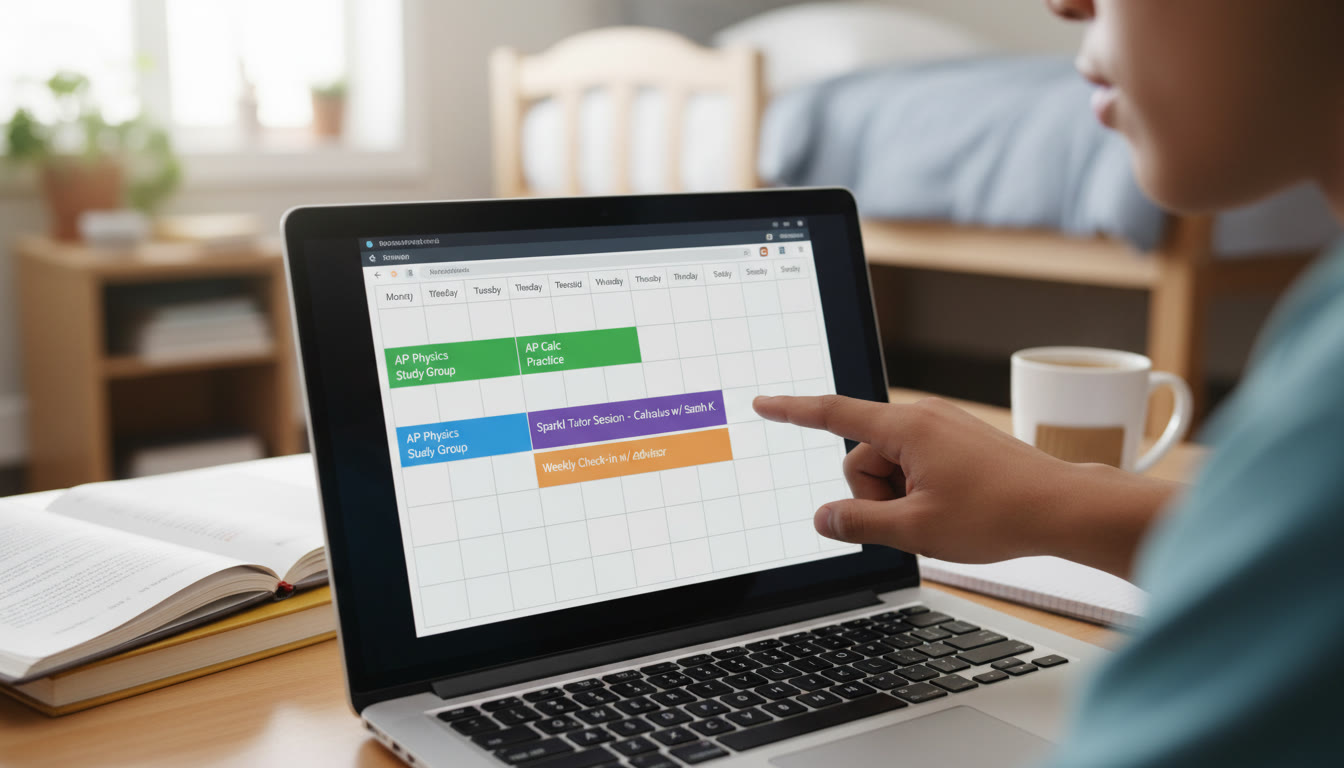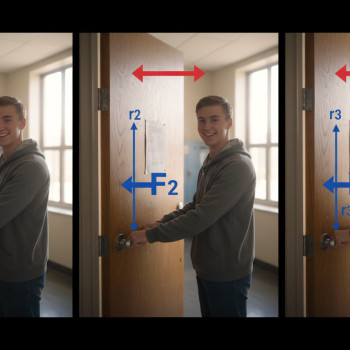Why a 20-Minute Weekly Check-In Changes the AP Game
Imagine 20 focused minutes each week that replace a month of frantic, last-minute scrambling. For families navigating AP courses, that tiny block of time can be the difference between steady progress and stress-fueled cramming. This is not about policing your teen — it’s about creating a predictable, gentle rhythm that keeps momentum, clarifies priorities, and builds confidence.

As a parent, you want your child to develop independence and study skills — but you also want to be an anchor. A weekly check-in is the perfect middle ground: structured enough to be meaningful, short enough to be sustainable.
What the 20 Minutes Should Do (and Not Do)
Core goals
- Surface wins and pain points from the past week.
- Set 2–4 concrete priorities for the coming week.
- Align resources and supports (tutoring session, review block, test date reminders).
- Reinforce habits: time blocking, targeted practice, and active review.
What to avoid
- No marathon homework checks — this is planning, not grading.
- Avoid vague goals like “study more” — be specific and measurable.
- Don’t turn it into a daily lecture. Keep it positive and forward-looking.
How to Structure Those 20 Minutes — A Simple Script
Think of this as a tiny meeting with clear agenda, timestamps, and outcomes. Below is a reliable structure you can use immediately.
- Minute 0–3: Quick Mood Check & Wins
Ask one question: “What went well this week?” Encourage one small win — it primes a positive tone. - Minute 3–8: Barriers & Bottlenecks
Identify one thing that blocked progress. Was a concept unclear? Did a lab or essay take longer than expected? Did time management slip? - Minute 8–13: Prioritize 2–4 Concrete Goals
Choose goals that are specific, measurable, and time-bound (e.g., “Complete Topic 3 practice set for AP Biology and review wrong answers for 30 minutes on Thursday”). - Minute 13–17: Align Resources
Decide how to get unstuck: book a 1-on-1 Sparkl tutoring session, schedule a focused review block, or use targeted practice exams. Make sure any appointments are placed in the calendar now. - Minute 17–20: Quick Accountability & Affirmation
Confirm one check (parent text reminder, shared calendar event, or follow-up at next check-in) and end on encouragement: “I’ve got your back — what I can do this week?”
Sample Weekly Check-In Template (Use It Repeatedly)
Below is a practical template you can copy into a note app or print. The goal is consistency — the same frame every week trains both of you to focus and move forward.
| Section | Prompt | Example |
|---|---|---|
| Wins | What went well? | Completed two AP Chemistry practice sections; improved pacing. |
| Blockers | What got in the way? | Struggled with balancing lab write-up time and problem sets. |
| Top 2–4 Goals | Specific tasks for the week | 1) Finish Unit 4 practice (AP Bio) — 3 sessions of 40 min; 2) Review wrong answers with tutor. |
| Supports/Resources | What help is needed? | Book a 1-on-1 Sparkl tutor for targeted review; block 2×45 min on Wednesday/Friday. |
| Check-in Plan | How will we follow up? | Parent reminder on Thursday morning; quick message after Friday review. |
Two Realistic Example Weeks — What This Looks Like in Practice
Example: Junior taking AP Calculus AB and AP Biology
Wins: Completed two AP Calc homework sets and corrected mistakes immediately. Biology lab notes are in order.
Blockers: Midterm in Chemistry next week eating study time.
- Goals: (1) Do 3 Calc timed problems every other day for 20 minutes. (2) Complete Unit 5 Bio practice and review key vocab daily for 10 minutes.
- Supports: Book two 1-on-1 Sparkl sessions — one for Calc problem-solving, one for Bio concept review.
- Follow-up: Parent sends calendar invites for study blocks; Friday evening quick check to see if timed problems were completed.
Example: Sophomore taking AP Language and AP US History
Wins: Submitted a strong AP Lang rhetorical analysis practice essay and got teacher feedback.
Blockers: Struggling with essay time management and remembering specific events for APUSH.
- Goals: (1) Practice one timed 40-minute essay on Saturday. (2) Use flashcards for 15 minutes daily on key APUSH timelines.
- Supports: Schedule one targeted Sparkl session to work on essay structure and pacing; create shared Quizlet list for APUSH terms.
- Follow-up: Parent checks in after Saturday essay — discuss one thing to improve next time.
Why Keep It Short? The Psychology Behind 20 Minutes
Our brains respond well to predictable, concise rituals. A short weekly check-in reduces resistance because it’s easy to commit to. It shifts the interaction from a nagging “Did you study?” to a collaborative planning session. For teens, autonomy matters — a short meeting that respects their time signals trust and encourages ownership.
How to Make the Check-In Teen-Friendly
- Use first-person language: “What do you want to focus on?” rather than “You need to…”
- Keep a visible, shared artifact: a note, calendar, or simple board that both can see.
- Offer choices: let them pick which two goals to prioritize.
- Celebrate small wins publicly: a small treat or verbal praise goes a long way.
When to Involve Outside Help (and How)
Some weeks are academic minefields — a difficult unit, an upcoming exam, or a concept that just won’t click. That’s when targeted outside help pays off faster than extra hours alone. Sparkl’s personalized tutoring can slot into the weekly plan: book a focused 1-on-1 session to address a specific blocker (e.g., calculus integration techniques or thesis development for essays). Tutors can provide tailored study plans, model problem-solving, and use AI-driven insights to track progress over time.
Sample Weekly Calendar Snapshot
Here’s a mock weekly snapshot showing how the short check-in translates into concrete planning for study blocks and supports. Use this as a blueprint to paste into a digital calendar.
| Day | Study Block | Focus | Support |
|---|---|---|---|
| Monday | 5:00–6:00 PM | AP Bio Unit Practice | Self-review notes |
| Wednesday | 7:00–8:00 PM | AP Calc Timed Problems | Sparkl 1-on-1 session |
| Thursday | 4:00–4:30 PM | Flashcards — APUSH | Parent quick check |
| Saturday | 10:00–11:00 AM | Timed AP Lang Essay | Peer review or tutor follow-up |
How to Track Progress Without Creating Extra Work
The danger of check-ins is turning them into administrative chores. Keep tracking lightweight:
- Use one shared note per subject with three fields: Completed, Learned, Next.
- Keep one short line of reflection after major tasks: “Timed essay — pacing improved on intro.”
- Rely on tutor reports when available. Many tutors (including Sparkl tutors) provide brief after-session notes that are useful for the weekly check-in.
Dealing with Burnout, Plateaus, and Test Anxiety
AP season can be intense. If momentum fades, use the 20-minute check-in to reset rather than scold. Strategies include:
- Cut goals in half for a week and focus on quality over quantity.
- Switch formats: replace one practice problem set with a hands-on review (whiteboard, teach-back to parent, or group study).
- Schedule a targeted Sparkl coaching session on test anxiety or pacing strategies.
Small psychological nudges — like breathing exercises before timed practice or a short “walk-and-talk” review — can significantly reduce stress and improve performance.
Customizing the Check-In for Different Ages and AP Loads
Not all AP students are the same. A senior juggling five APs needs a different rhythm than a sophomore taking one or two.
- One or Two APs: The 20-minute check-in can be student-led. Focus on depth: concept mastery, practice test reviews, and strategic tutor use.
- Three to Four APs: Use the check-in to triage — pick the two subjects with the most urgent needs that week. Rotate focus across weeks so no subject is neglected long-term.
- Five+ APs: Prioritize wellbeing. Use the check-in to identify unsustainable loads and consider re-balance options, plus strong tutor support for critical subjects.
Conversation Starters — Things Parents Can Say
- “Tell me one thing you really understood this week.”
- “What’s one small thing that would make next week easier?”
- “If you could use one tutoring session to fix one thing, what would it be?”
These prompts shift the tone to collaborative problem-solving rather than judgement.
When the Check-In Feels Forced: Signs and Fixes
If your teen pushes back, it’s a sign the process needs tweaking. Common fixes:
- Make it less frequent for a few weeks — biweekly instead of weekly.
- Alternate who leads the meeting. Let the teen write the agenda one week and you lead the next.
- Reframe into a celebration of habits: use the time to reflect on learning strategies, not just grades.
Measuring Long-Term Success
Success won’t always mean perfect scores — look for sustainable habits, consistent reduction in last-minute panic, and stronger self-advocacy with teachers or tutors. Over a semester, the weekly check-in should produce clearer trade-offs and better-informed decisions: fewer all-nighters, more targeted practice, and better use of tutoring hours.
Final Checklist: Your First Three Check-Ins
- Week 1: Set the ritual — keep it simple, establish the shared note or calendar, and book any immediate tutoring if needed.
- Week 2: Focus on consistency — test the sprint (time-blocks) and confirm what support helped most.
- Week 3: Evaluate and adapt — ask, “Is this saving time? Is it reducing stress?” and refine the plan.

Parting Thought
A 20-minute weekly check-in is small, but its ripple effects are big: clearer priorities, better use of tutoring, and a kinder academic rhythm for your teen. As parents, you’re not expected to solve every problem — you’re there to help structure success. Use the check-in to empower rather than instruct. When a specific gap appears, targeted supports like Sparkl’s personalized tutoring — 1-on-1 guidance, tailored study plans, expert tutors, and AI-driven insights — can be slotted into the plan and deliver outsized returns.
Ready-to-Copy Script
Here’s a two-line script to get started. Keep it short, keep it friendly:
“We’ll take 20 minutes to look back at one win, name one thing that got in the way, and pick two focused goals for the week. I’ll help schedule any support you need — and then it’s your plan.”
Appendix: Quick Troubleshooting Cheatsheet
- Missed Goals: Reduce the count next week and focus on pacing.
- Unexpected Test: Re-prioritize and schedule targeted tutor help immediately.
- Motivation Drop: Celebrate a small achievement publicly and shorten commitments.
Start small, stay consistent, and let those 20 minutes become a weekly anchor. You’ll be surprised how much calmer and more capable your child feels — and how much less parental stress follows.
















No Comments
Leave a comment Cancel